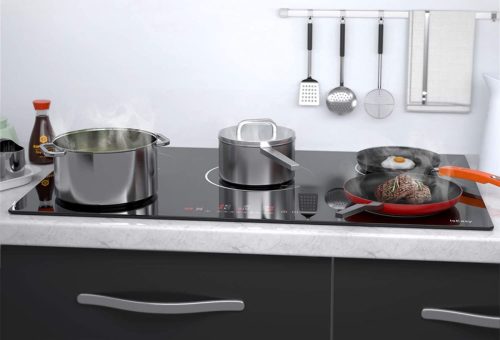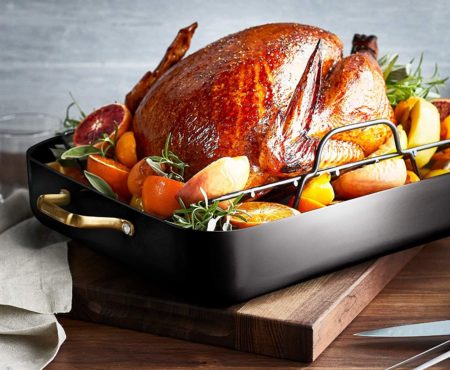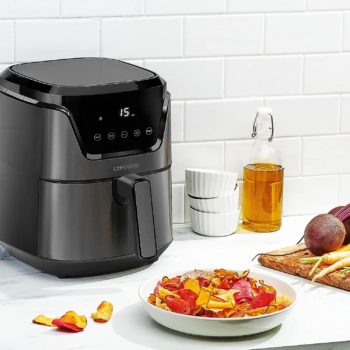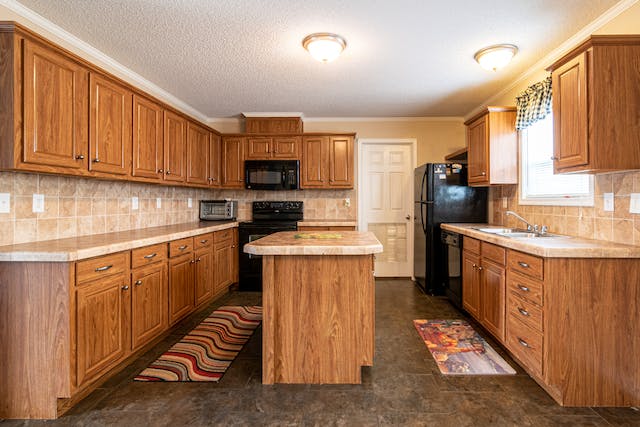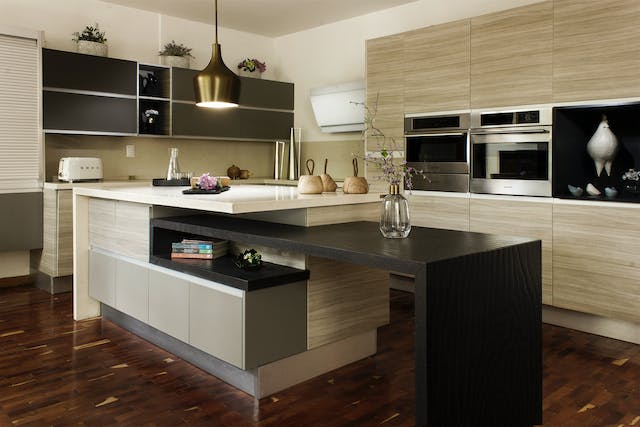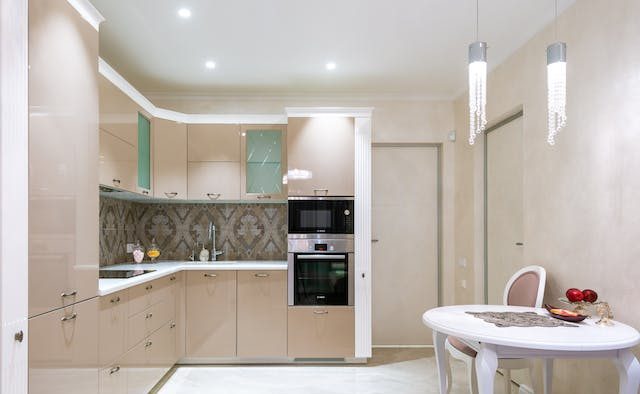Are you confused about how different the Dutch oven is compared to the French oven? Well, then let’s take on the challenge to alienate the differences to help you make informed decisions when purchasing your cookware.
Some decades ago most people would consider visiting popular food joints and posh hotels to enjoy great meals. However, with the advent of recipe blogs, Pinterest, and recipe vlogs, more people have become home chefs thanks to the easy access to recipes. Nevertheless, the current age struggles with discovering what content creators refer to during their recipes due to interchangeable words use in naming and/or using different ingredients and cookware.
A perfect example is the use of the Dutch oven and French oven interchangeably both in naming and use by some content creators. Let’s kick away the confusion between the Dutch oven and the French oven in this article for better knowledge and optimal use for your home chefs.
What is a Dutch Oven?
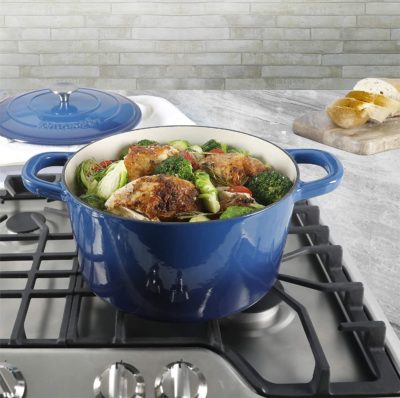
To understand what the Dutch oven is we might need to dig back in the 17th Century history. Here, the Dutch invented a modern way of cooking which would by far aid them cook more efficiently. The invention involved using molds made of sand rather than clay and opening them to cast iron. Notably, the cast-iron pots were denser and provided low but consistent heat that helped cook tough meats and vegetables. While the inventions date back to The Netherlands, the Dutch ovens were patented by Abraham Darby, an Englishman in the early eighteenth century.
Nowadays, the Dutch oven comes as flat-based cooking vessels made of cast with straight walls and tight-fitting lids. With such a model, the Dutch oven remains quite great for trapping condensation during cooking hence a shorter cooking time. The Dutch oven also helps keep food moist and intensify the food flavors, hence making them a baker’s home favorite tool for making homemade bread. However, Dutch ovens crafted from raw cast iron might need to be improved to ensure their cooking surface is stick-resistant.
What of the French Oven?
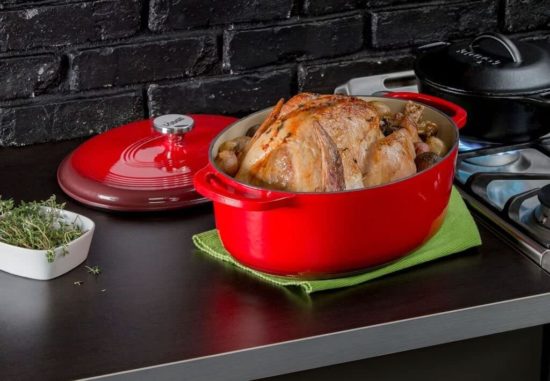
To be sincere, the French oven is quite similar to the Dutch oven so don’t be surprised to see some major similarities. The best way to describe the French oven is to refer it to as a cast-iron ‘Dutch’ oven with a porcelain enamel coating. Ushered in the cooking arena back at the beginning of the twentieth century, the French oven offered some improvement to the Dutch oven on the stick-resistance thanks to the enameled surface.
Notably, the French oven is referred to as a cocotte. Additionally, the French oven’s enameled coating helps eliminate the need for seasoning hence easy maintenance.
What is the difference between the Dutch Oven and French Oven?
From the above description of both ovens, it is evident that they share a similar material of make, that is, cast iron which makes them super durable. However, the main difference between the Dutch oven and the French oven is enshrined in the maintenance and coating of each of the ovens.
While the French oven has an enameled coating and has to be treated quite differently, the Dutch oven obtains its non-stick surface following regular seasoning. Additionally, the next set of differences between the Dutch oven and the French oven might be found in how the two are used.
What is the Cooking Experience with Dutch Ovens?
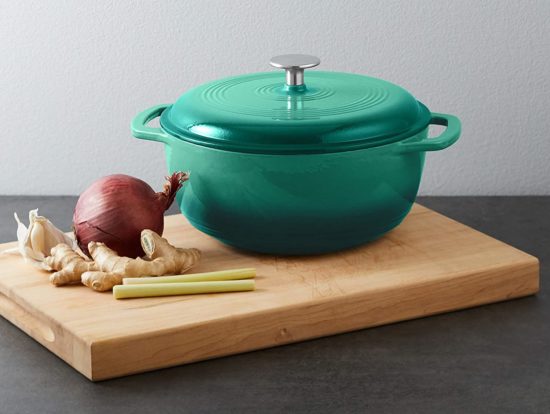
Dutch ovens will require regular seasoning for efficiency in cooking. To do so, you will need to clean and dry the Dutch oven first. Then, spread a layer of mild vegetable oil on its inner surface. Here, a paper towel may come in handy in helping you spread the vegetable oil. After this, you can preheat your oven to about 375℉ followed by baking the cookware for about an hour or so. You can now allow it to cool and then store it.
Notably, the seasoning process is great to ensure that the Dutch oven retains its stick resistance. However, a challenge in cleaning it might arise especially when the Dutch oven is not seasoned properly. Note that you will require to scrub it gently to loosen any food particles. Intense scrubbing and use of soap are prohibited here.
What is the Cooking Experience with French Ovens?
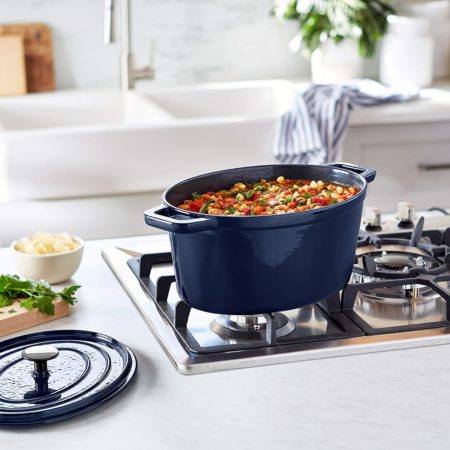
Unlike the Dutch oven, you will require no seasoning for the French oven. Not only does its enamel coating give it a great look but also makes its maintenance easy. Notably, the French oven is quite easy to clean since its enamel coating makes it a natural non-stick. Following this, the French oven is dishwasher washable. While seasoning might not be needed while using the French oven there is a need to preheat it always before use.
Can the Dutch Oven and French Oven Be Used Interchangeably?
The best way to have the two ovens used interchangeably is by optimally seasoning the Dutch oven to make it stick-resistant. Otherwise, each oven makes better cookware for given meals. When it comes to a cast-iron Dutch oven, you would probably make it your primary oven for cooking if;
- Seasoning your cookware remains not a bother
- You take pride in cooking a variety of one-pot dishes
- You like cooking on campfires or any other open fire
- The multifarious flavors possessed by cast iron suits your taste.
On the other edge, a French oven might suit your cooking needs if,
- You are in search of an attractive pot to use for cooking as well as serving dish
- You prefer to use a dishwasher for cleaning on your cookware
- You don’t cook over an open fire especially a campfire (French oven are not heat resistant)
The Verdict
With the Dutch oven and French oven made of cast iron, they are both excellent sets of cookware to possess adding to their durable nature. Nevertheless, the two remain quite distinct despite the similarities shared. The differences are manifested in the oven’s coatings which in return yield differing maintenance procedures and use in some instances.
Hence, consider the noted differences when shopping for your cookware considering the use and personal preferences on the maintenance of the ovens. Most home chefs might go for the French ovens thanks to their easy maintenance, convenience, and great stick resistance.
